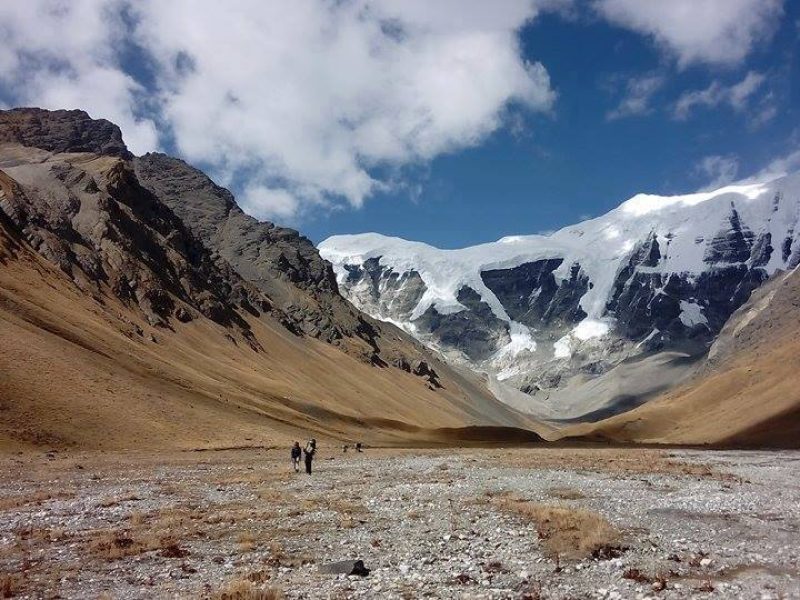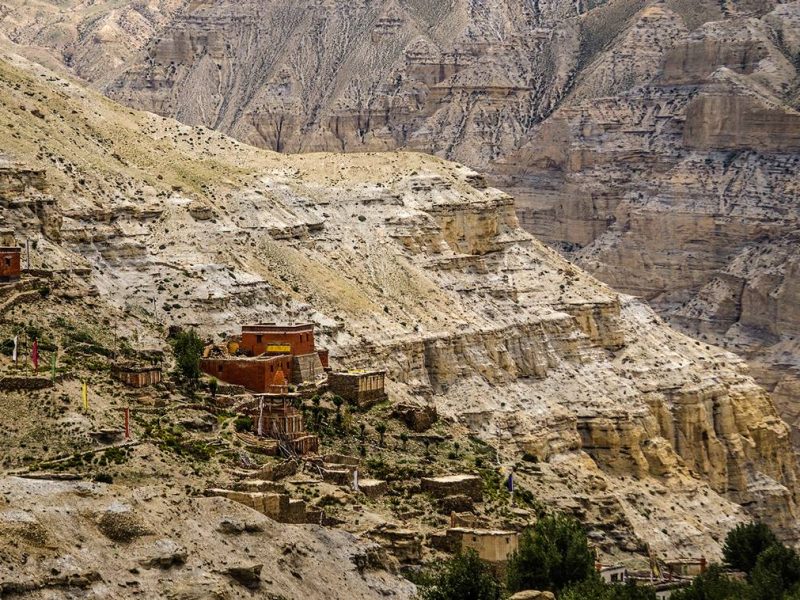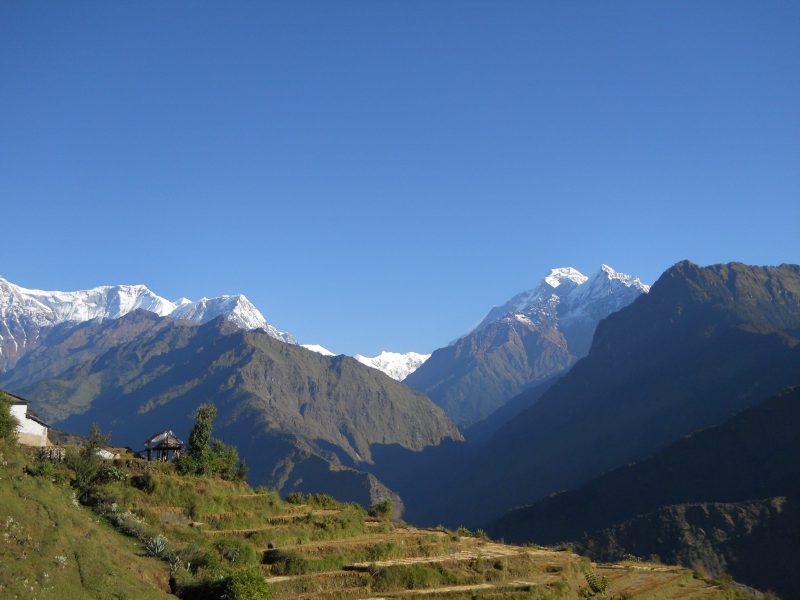Explore ancient Tibetan culture, untouched landscapes, and high mountain passes with Nature Heaven Treks and Expedition.
Upper Dolpo Trek is one of the most remote and breathtaking adventures in Nepal. Nestled in the far northwest of the country, this trek offers an authentic Himalayan experience, far from the popular tourist trails. With its unspoiled Tibetan Buddhist culture, sacred lakes, high-altitude passes, and wild, dramatic landscapes, the Upper Dolpo region is perfect for those looking to book a truly off-the-beaten-path trek.
Upper Dolpo is a treasure trove of Tibetan Buddhist heritage. Many of the people in this area belong to Tibetan ethnic groups and follow ancient customs and traditions. As you trek through villages like Dho Tarap and Ringmo, you’ll witness traditional lifestyles that have remained untouched for centuries. Local people still herd yaks, farm the rugged land, and live deeply spiritual lives connected to the Himalayan environment.
Highlights include a visit to Shey Gompa, one of the most sacred monasteries in the region. The gompa and surrounding Bön and Buddhist culture offer insight into the spiritual essence of Upper Dolpo. This is more than a trek—it’s a cultural journey into a world where time stands still.
One of the most iconic sights on the Upper Dolpo Trek itinerary is Phoksundo Lake, a stunning turquoise lake surrounded by steep cliffs and dry alpine terrain. This lake is sacred to both Hindus and Buddhists, and its calm waters reflect the spiritual peace that defines this region.
As you ascend through barren valleys, lush forests, and alpine meadows, you’ll cross high passes like Numa La Pass (5,190m) and Baga La Pass (5,170m). The views of Dhaulagiri, Kanjiroba Himal, and the distant Tibetan plateau are simply unmatched. The landscapes are wild, colorful, and incredibly photogenic—perfect for trekkers and photographers alike.
Nature Heaven Treks offers fully guided Upper Dolpo Trek packages, including flights from Kathmandu to Nepalgunj and on to Juphal, the trek’s starting point. You will need a special permit for Upper Dolpo, which our team will handle for you. Our packages also include accommodation, meals, a licensed guide, porters, and all transportation arrangements.
Upper Dolpo trek 20 days is the standard duration, but we offer customized itineraries based on your time, fitness, and preferences.
Whether you’re looking for a private Upper Dolpo trek, a group trek, or a luxury trekking experience, Nature Heaven Treks and Expedition provides high-quality service at competitive prices. Choose from:
🔹 Affordable Upper Dolpo trek options
🔹 Upper Dolpo trek with porter and guide
🔹 Full board Upper Dolpo trek package
🔹 Compare Upper Dolpo trek packages to find the best fit
🔹 Upper Dolpo trek fixed departures for 2025
We also offer Upper Dolpo trek group discounts for friends, families, or student groups.
✅ Over a decade of experience in remote Himalayan trekking
✅ Expert local guides familiar with Dolpo’s terrain and culture
✅ Smooth logistics including Upper Dolpo trek permits, flights, and accommodations
✅ Customizable trek packages for your needs and budget
✅ Outstanding reviews and top-rated Upper Dolpo trekking services
Planning for Upper Dolpo Trek 2025? Now is the perfect time to secure your spot. We are offering early bird deals, custom itineraries, and group departures with flexible options. You can book Upper Dolpo trek directly with us and enjoy peace of mind with expert support throughout your journey.
❓ Frequently Asked Questions
Q: How to reach the Upper Dolpo trek starting point?
A: You fly from Kathmandu to Nepalgunj, then take a flight to Juphal, from where the trek begins.
Q: What is the cost of Upper Dolpo Trek?
A: The Upper Dolpo trek cost depends on the package, group size, and customization. On average, it ranges from USD 3,000 to 4,200 per person for a full-board package with guide, permits, and internal flights.
Q: Do I need permits for Upper Dolpo?
A: Yes, special permits are required. We arrange all permits, including the Upper Dolpo Restricted Area Permit and Shey Phoksundo National Park entry.
Q: What’s the best time to do Upper Dolpo Trek?
A: The best months are May to October, with clear skies, warmer temperatures, and safer mountain pass crossings.
Q: What’s the difference between Upper and Lower Dolpo?
A: Upper Dolpo is more remote and culturally Tibetan. Lower Dolpo is slightly more accessible and can be done in a shorter time. We offer both or a combined Dolpo trek itinerary.
Step into the untouched world of Upper Dolpo, where culture, nature, and adventure blend into an unforgettable trekking experience. With Nature Heaven Treks and Expedition, your journey will be safe, smooth, and full of awe-inspiring moments.
Contact us now to learn more about our Upper Dolpo Trek booking, itinerary details, and pricing for 2025 departures.

The Upper Dolpo Trek is renowned for its spectacular scenery. The region is blessed with a landscape that is truly unique, where jagged peaks rise above arid valleys, and high-altitude lakes shimmer in the sun. One of the highlights of the trek is Phoksundo Lake, a stunning turquoise body of water set amidst towering cliffs. The lake is considered sacred by the locals, and its serene beauty offers trekkers a chance to pause and reflect on the journey thus far.
The surrounding landscape is a mesmerizing mix of Tibetan plateau-like terrain, alpine meadows, and barren, rocky hills. As you ascend to higher altitudes, the views of the distant peaks of the Kanjiroba Himal, Dhaulagiri, and the Himalchuli ranges become increasingly dramatic. The contrast of the deep green of the valleys with the stark white snow-capped peaks creates a scenery that feels otherworldly.
Trekking through this remote area, trekkers will also encounter pristine forests of juniper, rhododendron, and pine. As you cross several high passes, including Baga La Pass (5,170 meters) and Numa La Pass (5,190 meters), the views expand into vast, expansive landscapes that seem to stretch on forever.
Day 1: Fly to Nepalgunj
Take a flight from Kathmandu to Nepalgunj, a city near the Indian border.
Day 2: Fly to Juphal, Trek to Dunai (2,140m)
Short flight to Juphal, then an easy trek to Dunai – the district headquarters.
Day 3: Trek to Chhepka (2,630m)
Walk along the river and through forest trails to reach the village of Chhepka.
Day 4: Trek to Jharana Hotel (3,170m)
Continue through the Shey Phoksundo National Park, seeing waterfalls and forests.
Day 5: Trek to Phoksundo Lake (3,611m)
Reach the stunning turquoise Phoksundo Lake – one of the highlights of the trek.
Day 6: Acclimatization Day at Phoksundo Lake
Rest and explore the lake area to help your body adjust to the altitude.
Day 7: Trek to Sallaghari (3,630m)
Walk through a remote trail with beautiful scenery and forested landscapes.
Day 8: Trek to Nangdala High Camp (4,700m)
Climb higher to prepare for crossing the Nangdala Pass the next day.
Day 9: Cross Nangdala Pass (5,350m), Trek to Shey Gompa (4,500m)
Cross a high mountain pass and descend to the ancient Shey monastery.
Day 10: Rest Day at Shey Gompa
Take a break, explore the monastery, and enjoy the peaceful surroundings.
Day 11: Trek to Namgung (4,430m)
Hike through a beautiful valley to the small village of Namgung.
Day 12: Trek to Saldang (4,100m)
A short and scenic walk to Saldang, a culturally rich village.
Day 13: Trek to Yangze (4,200m)
Visit monasteries and enjoy unique Tibetan culture in this remote area.
Day 14: Trek back to Saldang
Retrace your steps back to Saldang.
Day 15: Trek to Komash Village (4,060m)
Travel through dry terrain to a quiet village with unique culture.
Day 16: Trek to Shimen (3,870m)
Pass through traditional villages and barley fields.
Day 17: Trek to Tinje (4,180m)
Reach Tinje, once an important trade point with Tibet.
Day 18: Trek to Yak Kharka (4,000m)
Walk through a peaceful trail and camp near yak pastures.
Day 19: Trek to Tokyu Gaon (4,200m)
Head towards the Dho Tarap Valley, a beautiful area with monasteries.
Day 20: Trek to Dho Tarap (4,040m)
Explore the traditional village of Dho, rich in culture and Buddhist heritage.
Day 21: Rest Day at Dho Tarap
Relax, explore the village, and interact with local people.
Day 22: Trek to Tarap Khola (3,800m)
Begin descending along the Tarap River.
Day 23: Trek to Khanigaon (3,150m)
Pass through narrow gorges and rocky paths.
Day 24: Trek to Tarakot (2,540m)
Reach a village with a historic fort and scenic views.
Day 25: Trek to Dunai (2,140m)
Return to the district center of Dunai.
Day 26: Trek to Juphal (2,475m)
Last walking day – short hike to the Juphal airstrip.
Day 27: Fly to Nepalgunj, then Kathmandu
Fly back to Kathmandu with wonderful memories.

Upper Dolpo, having good travel insurance is very important. Make sure your insurance covers high-altitude trekking and emergency helicopter rescue because help can be far away.
Altitude sickness happens when you go too high too fast. It can make you feel dizzy, tired, headache, or even more serious problems like trouble breathing. To avoid this, climb slowly, drink lots of water, and listen to your body. If symptoms get worse, you should stop climbing and go down to a lower altitude immediately.
Always choose insurance that covers altitude sickness and evacuation. This way, you stay safe and prepared during your amazing Upper Dolpo adventure.
The Upper Dolpo Trek is not for the faint of heart. The region’s remoteness, combined with its high-altitude passes and difficult terrain, means that the trek is physically demanding. The trek usually lasts for around 20 to 24 days, covering over 200 kilometers and passing through a variety of challenging terrain, from steep ascents and rocky trails to deep river valleys.
Due to the high altitude, trekkers need to be prepared for the physical challenges that come with trekking in such conditions. Acclimatization is key, and trekkers will spend several days at intermediate elevations to help the body adjust to the thinning air. The highest point of the trek, Numa La Pass, reaches 5,190 meters (17,030 feet), where the air is thin, and the trek can be demanding even for experienced trekkers. This trek requires good physical conditioning and preparation for extended trekking days, as well as resilience to cope with the altitude.
Despite the challenges, the reward is immense. As you traverse the remote landscapes of Upper Dolpo, the sense of achievement, combined with the serenity of the surroundings, makes every step worthwhile. The region’s isolation means that you’ll be trekking on trails that are often free of crowds, offering peace and solitude in abundance.
Upper Dolpo is home to an impressive array of wildlife, much of which is rarely seen elsewhere in Nepal. The region’s diverse ecosystems support animals such as Himalayan blue sheep, yaks, snow leopards, and musk deer. Birdwatchers can spot a variety of species, including the elusive Himalayan griffon vulture, snow partridges, and bearded vultures. The landscape is also dotted with medicinal plants, which are used by locals for both practical and spiritual purposes.
The trek also passes through the Shey Phoksundo National Park, a protected area that plays an important role in preserving the biodiversity of the region. The park is home to a range of unique plants and animals, and its protection has ensured that this pristine area remains largely untouched by modern development.

Trekking in Upper Dolpo requires careful planning and preparation. As it is a remote and restricted area, trekkers need a special restricted area permit from the Nepalese government. Additionally, trekkers are required to be accompanied by a registered guide, as the region is not well marked, and a local guide’s knowledge of the terrain and culture can be invaluable.
The best time to trek in Upper Dolpo is during the autumn (September to November) and spring (March to May) seasons. These months offer the clearest weather, allowing trekkers to enjoy the panoramic mountain views and avoid the monsoon rains or the harsh winter cold.
The Upper Dolpo Trek is a special adventure in one of Nepal’s most remote and untouched places. If you want to see the real beauty of the Himalayas and learn about Tibetan culture, this trek is perfect for you. The journey takes you through amazing mountains, high passes, and peaceful villages where the local Dolpa people live.
This trek is not easy — it tests your strength and patience. But it also gives you a chance to enjoy quiet nature, fresh air, and stunning views all around. You will walk through forests, cross rivers, and climb high mountain paths. Along the way, you can see beautiful animals and plants that live only here.
The people of Upper Dolpo have a unique culture, influenced by Tibetan traditions. You can visit old monasteries, meet kind villagers, and learn about their simple way of life. This is a rare chance to experience a world far from cities and crowded places.
Overall, the Upper Dolpo Trek is an unforgettable trip. It helps you feel close to nature and understand the strong spirit of the Dolpa people. If you want to explore wild mountains and discover new cultures, this trek will give you memories that last a lifetime.
@Copyright 2025 Nature Heaven Treks and Expedition, Kathmandu, Nepal. All Rights Reserved.
Chat with Us